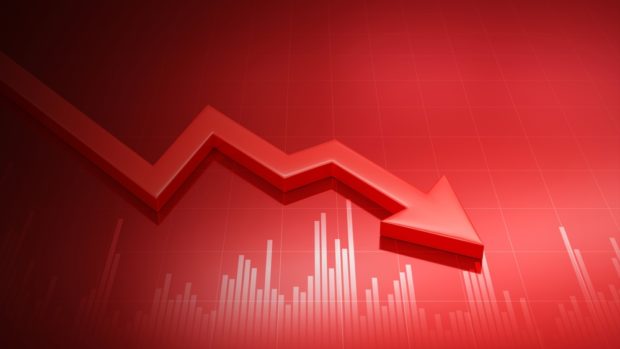
As we know there is plenty of turmoil in the currency markets, turmoil that’s now adding further fiscal pressures to UK businesses and consumers.
The fact that the £££ is at its lowest point since the early 1970s is creating immense pressure for all manner of businesses who rely on a stronger pound to pay all those overseas suppliers they committed to many months ago.
As inflation rages the Bank of England’s remit is to find ways to curtail it and its biggest blunt instrument is that of painful ‘interest rate rises’ that are supposed to dampen consumer spending. However, as interest rates rise they make business borrowing for growth less attractive for obvious reasons.
So businesses that are fiscally proactive look to tighten the belt in the first instance with some looking to shore up the balance sheet with investment to help ride out the turbulence and aid with innovation and growth.
What is valuation?
Valuation refers to the process of determining the present value of a company, investment or an asset. It can be done using a number of methods. Analysts who want to place a value on an asset normally look at the prospective future earning potential of that company or asset.
By trading a security on an exchange, sellers and buyers will dictate the market value of that bond or stock. However, intrinsic value is a concept that refers to a security’s perceived value on the basis of future earnings or other attributes that are not related to a security’s market value. source Corporate Finance Institute
Therefore, the work of analysts when doing valuation is to know if an investment or a company is undervalued or overvalued by the market.
When looking for investment there are a few standard financial metrics that investors tend to look for.
- Base it on revenue. How much does the business generate in annual sales? Calculate that and determine, through a stockbroker or a business broker, how much a typical business in your industry might be worth for a certain level of sales. For example, it might typically be about two times sales.
- Use earnings multiples. A more relevant measure is probably a multiple of the company’s earnings or the price-to-earnings (P/E) ratio. Estimate the earnings of the company for the next few years. If a typical P/E ratio is 15 and the projected earnings are $200,000 a year, the business would be worth $3 million. Source TheHartford.com
For the purposes of this article let’s ignore the startup world and focus on early-stage, or mature SMEs because this is where I often see the most opportunity for innovation and growth. However, this is the sector where I also see the biggest lost opportunity for both parties to accurately identify and benchmark the ‘multiple’ (valuation) which is one of the biggest factors as described above when PE/VCs look at investment.
In any investment process there are always parties on either side of the deal, and without going into the detail of different types of deals let’s look at obtaining investment from the PE/VC community.
In my experience businesses looking for investment are always highly optimistic that not only do they have the best thing since sliced bread but their future growth curve is a one-horse race – this optimism is of huge interest to the investor and most likely where they will spend most of their time doing their own due diligence.
The factual reality is that neither party really does sufficient DD, because the initial investor reaction is at best superficial, which means a deal doesn’t always feel right so they walk away in the main because there’s insufficient homework done by the business looking for investment.
In my experience, this is often highlighted with a page in the prospectus deck comparing their business to others in the sector e.g.
“brand z raised y amount of investment based on an x multiple valuation, therefore we are worth zillions”.
This is totally flawed thinking and most definitely one of the key reasons why you get a lower ball valuation and part with a higher amount of equity.
The good news is this is also how investors tend to look at valuing your company – amongst other key factors of course!!!
In summary, if you’re a business looking for investment or an investing PE/VC it’s always worth engaging an sector advisor who can bring sector analyst to look at a validated benchmark – this is something we at ‘Investor Brands’ can do for you, and where I personally focus on retail and any associated technology sectors.
I often work with PE/VC’s who are considering making an investment into a company and want to better understand where the opportunity to improve the value once invested can come from – this didn’t change the funding investment or equity amount but it did make the difference between doing the deal or not.
Funding from the PE/VC sector is time-consuming, and for many SMEs can be a huge and costly distraction over many months with typical deal flow taking anything up to 6-9 months. A significant part of reducing this timeline and optimising the outcome comes down to how much due diligence and validated valuation benchmarking we can perform on yourselves, your potential funding partners, and vice versa.
Clarity of purpose and aligned internal understanding of the amount needed to be raised, timing, alignment of the right funding partners required is critical to use of resource, time, and successful outcomes. If managed correctly, the key objective with this strategy is to increase the valuation and associated multiple of the company combined with reducing the timeline for funding.
To do this requires the businesses looking for investment funding to better understand an investor’s experience and track record with insight into previous deals, fund performance and more.
To improve your evaluation criteria and the associated improved multiple you need to be able to benchmark yourselves against similar business deals that have taken place. Most of which are rarely published on the open web.
I tend to benchmark valuations based on data that is derived from the largest universe of private market data, including information on portfolio construction, industry, size, vintage year, and more across 80,000+ individual funds.
So, to be confident about your own evaluation and anticipated multiple increases you will need to leverage granular financial data or engage someone that can do this for you.
This detailed DD will become critical when searching for investing partners and can present a benchmark that truly highlights the value of your strategy. This process will need to prioritise which investors to pursue and tailor your pitch to their goals, we do this with insight into mandates, allocations, commitments, and preferences.
In summary, you need to find the investors most aligned to commit to your funding requirements combined with a referenceable benchmark for our valuation/multiple.
Purpose: Taking the time to establish the evaluation criteria to support any funding strategy.








Share